Following the very satisfyingly spent day in Campeche, I went for a walk around the historic centre in the evening and then I returned to my room simply because I had to take shower because of all the sweat that I produced that day. Needless to say, I would not even mention this had it not been for the need to use the shared bathroom for the purpose.
Back in the day, when during my hiking trips around Serbia and Montenegro I stayed at mountain huts or when during my travels around Europe I stayed in hostels, it was quite a normal thing for me to sleep in rooms with 4 to 100 beds and to use shared bathrooms. Then some time passed, I became older and more financially stable, so I simply took this out of my travels. But, as I’ve already mentioned in the previous sequel to the story about my journey around Mexico and Central America in 2008, I did not have much choice in Campeche, so I accepted this arrangement. After all, at least I had my single room. Still, the experience, like in many other situations in life, was very welcome here. And so, I put all of the important things (passports, credit cards, money and the key to my room) into a plastic bag and took this with me to the bathroom and into the shower cabin, where I found a good place to hang this. It all went perfectly well.
Although the shower felt very good and refreshed me, after that I gave up on any further walk around the centre and went to bed very early. But, although single, that room of mine was very specific. As I’ve said, it did not have a single window and that meant not only that it was pitch-black when I turned the lamp off, but also that there was no air circulation, so I worried how I would sleep there. However, there was a ceiling fan and it cooled me down quite nicely, so I even turned it off before falling asleep.
In the morning, still in pitch-black, I woke up around 6 am and felt a little hot, so I turned the ceiling fan on again and continued to sleep for another hour and a half and then I got up, packed up my things, went to the shared bathroom and again started to stroll around Campeche, since I had a coach only later, around noon.
Outside I was greeted by a wonderful morning and it still felt pleasantly fresh. On top of that, the centre was still unusually calm and without people in the streets.
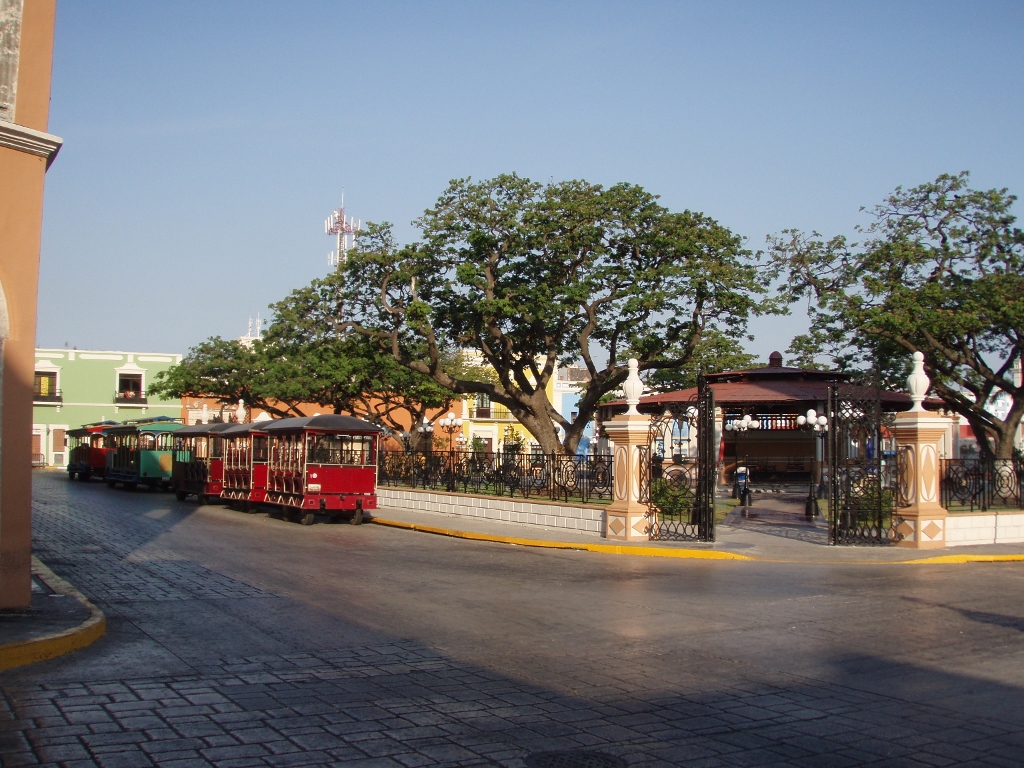 Campeche – the Independence Square
Campeche – the Independence Square
Also, the facades of the surrounding houses were magnificent.
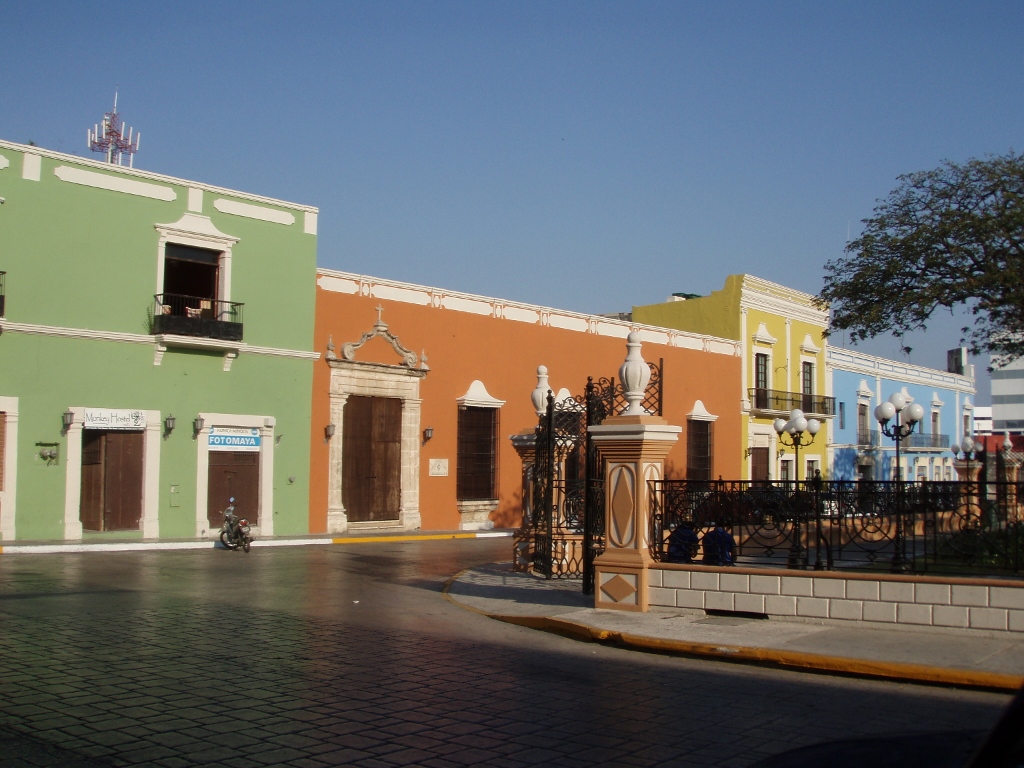 Campeche – a detail from the Independence Square
Campeche – a detail from the Independence Square
Although not in the very middle of the historic centre of Campeche, as the main square in the old part of the city the Independence Square follows the concept of such urban spaces: it has a square shape and in its middle there is a park, and there is also the Cathedral.
The Cathedral in Campeche is officially called Our Lady of the Immaculate Conception Cathedral (Catedral de Nuestra Señora de la Purísima Concepción). It is one of the first churches built on Yucatan and its construction started in 1540, but it took a little longer and was finished only in 1760, so its main characteristics in terms of the style belong to Baroque. Since the front facade of the Cathedral was in the shade this morning, here is its photo I took the afternoon before in which the church can be seen much better.
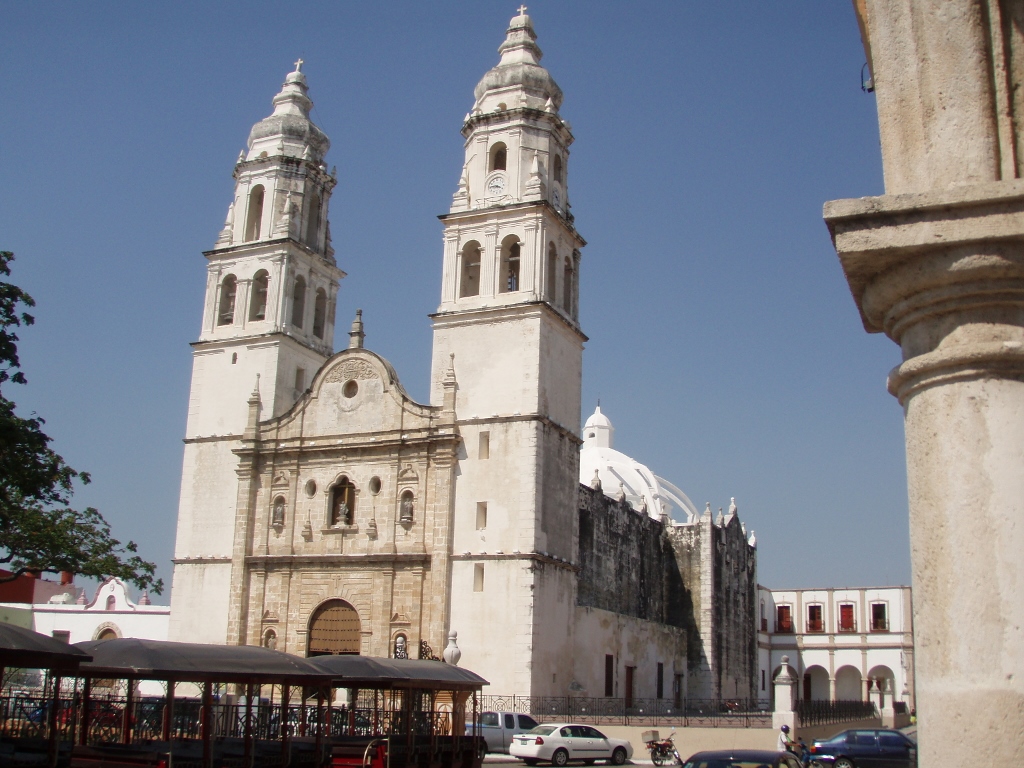 Campeche – the Cathedral
Campeche – the Cathedral
By the way, both on a couple of photos I published earlier, as well as in the first photo in this sequel of the travel stories, one can see tourist open-sided trams parked in the main square of the historic centre of Campeche that have been adjusted so that they don’t run on tracks but on roads. Although this looks very picturesque, just like the entire historic centre, I did not have the time, or the ambition, to go for such a ride.
What I did do was to go on a search for a morning coffee and I indeed found a lovely place – a paved courtyard, but since it was still early, it seemed nobody was working there. However, since I lingered in order to take photos, a waiter did present himself and I could take a fine coffee there after all. While I enjoyed the coffee and the setting, I found it fascinating that such a pretty place was not a part of the historic and tourist story about Campeche.
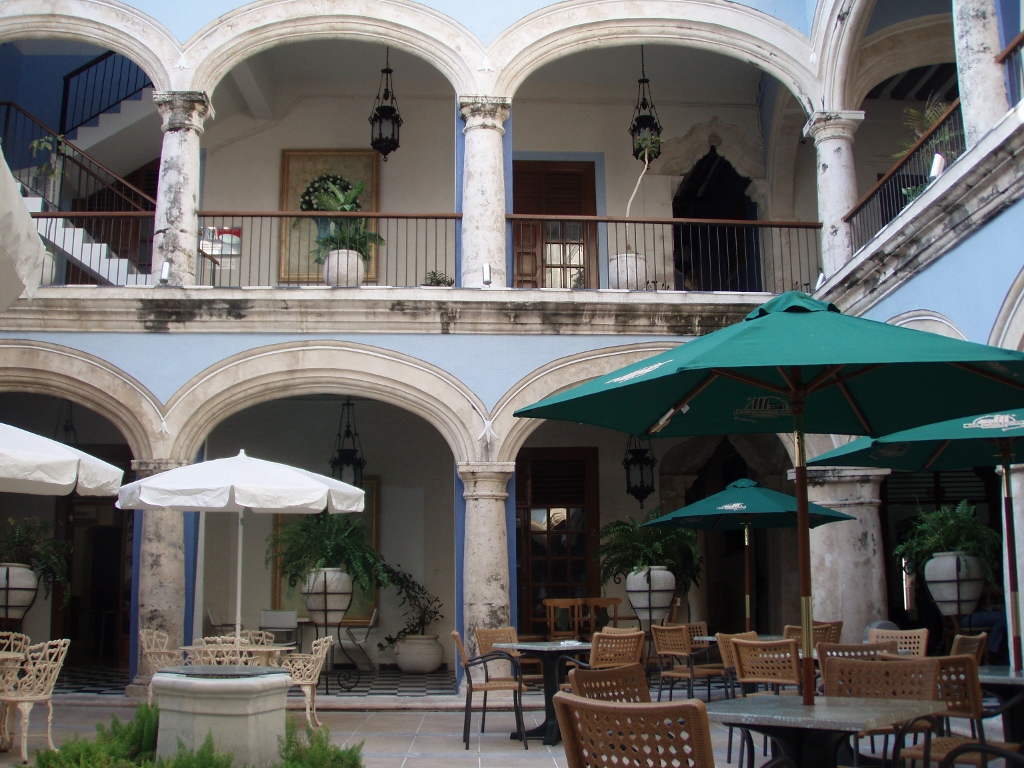 A “historically unimportant” courtyard in Campeche
A “historically unimportant” courtyard in Campeche
After this fine break, I moved on in order to use the remaining time to the maximum and go for yet another walk. So I got to Bastion de Santiago (Baluarte de Santiago) which over time got completely separated from the rest of the fortress and nowadays there are streets running around it, while within the bastion itself there is a botanical garden.
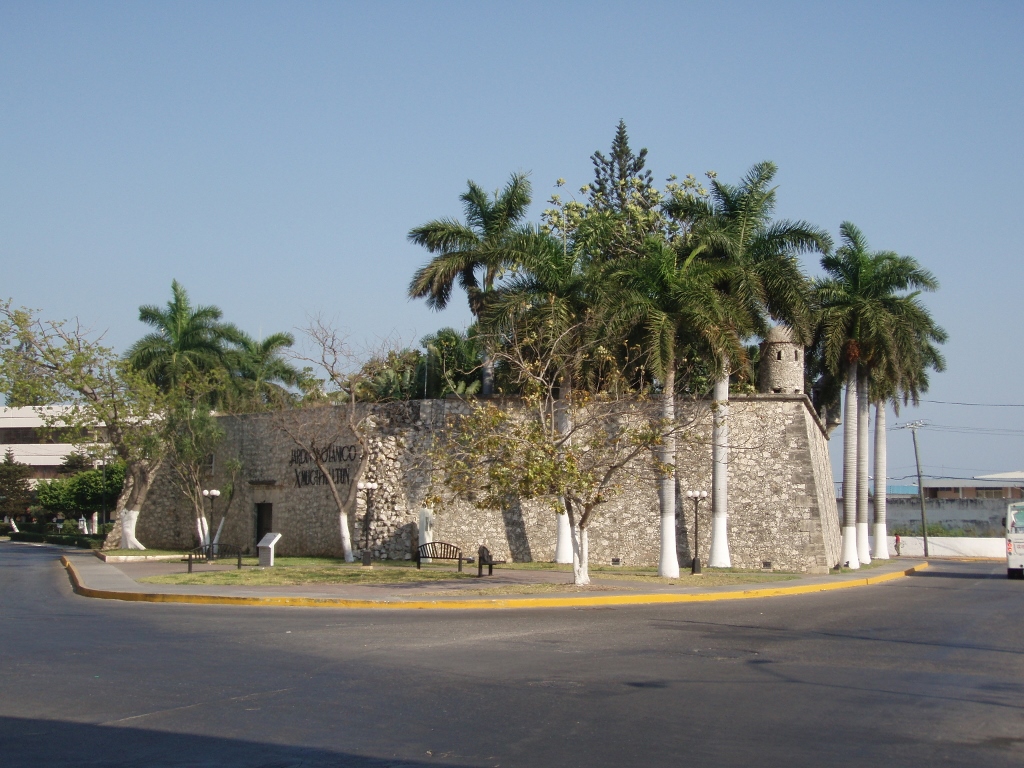 Bastion de Santiago and the Botanical Garden in Campeche
Bastion de Santiago and the Botanical Garden in Campeche
However, the Botanical Garden was not open either, since it was not even 9 am, so I walked slowly back to the hostel where I checked the emails and then went for a breakfast. Among other things, there were also some healthy bits.
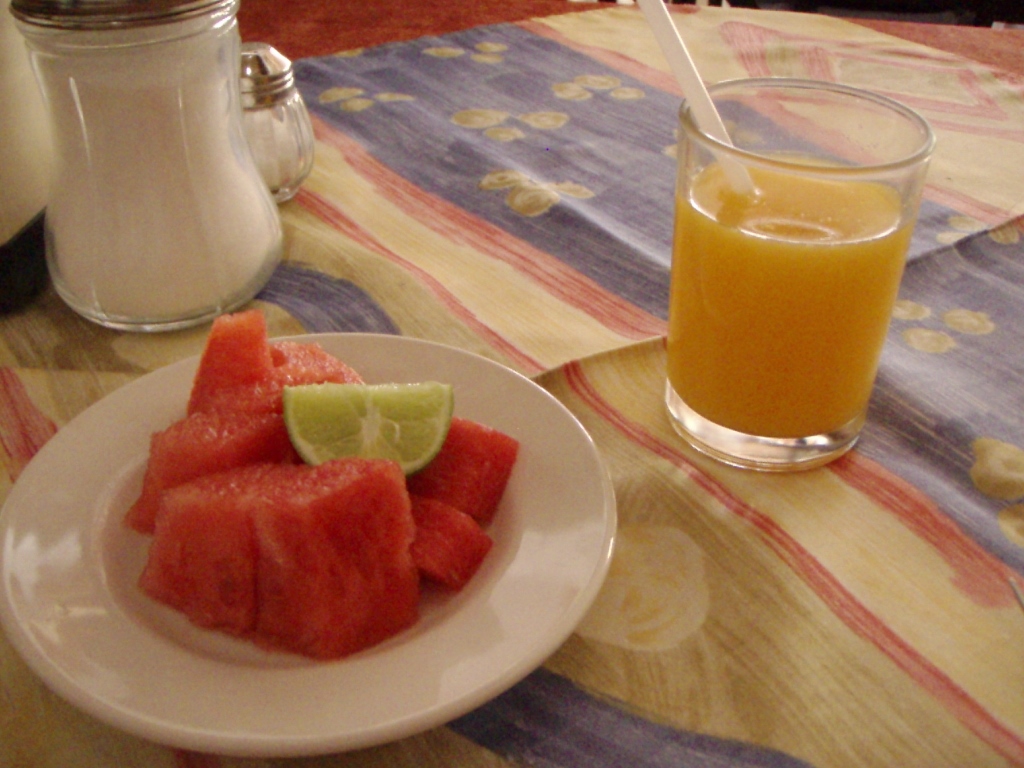 Part of the breakfast in Campeche
Part of the breakfast in Campeche
While I was waiting for the time to pass before heading for the coach terminal, I was aware that regardless of the walk and the sightseeing in the recent days I felt quite low, heavy, filled with doubt... I must also admit that I rarely reacted deeply to some of the things I saw. I enjoyed most of the time in Uxmal, I loved Merida in the evening and the centre of Campeche... But I did ask myself from time to time why I needed all of this. This inner state of mine was partially caused by the occasional big heat that I found utterly unpleasant. Thus, back in Chichén Itzá I was shocked, almost frightened, when I saw myself in the toilet’s mirror after the sightseeing. I was INCREDIBLY red in the face. It seemed to me there was not the same, high level of humidity as in India, in the morning and evening it was quite pleasant here, but during the day I found it horribly hot and I felt quite exhausted. Often. And then, there were periods when there was absolutely nothing wrong with me. This morning I started very joyfully with an “additional” walk around Campeche, but already by the time I was to leave the hostel and take a taxi to the coach terminal, I was mildly down.
This state of mine was probably also caused by occasional impression that I was spending my budget far too fast, and that worried me a lot. And then there were times when it seemed everything was under control. What I want to say is that I was in a very specific mood, but there was basically nothing I could do. My return flight to Belgrade was in some three weeks and I simply had to do something with this time. Since I had no other idea, I just continued with my travel and sightseeing and on this day this meant moving on to Palenque.
In the beginning, the coach drove on the road that followed the shore of the Gulf of Mexico, but afterwards it moved more inland and this was the last I saw of the Gulf of Mexico during this journey.
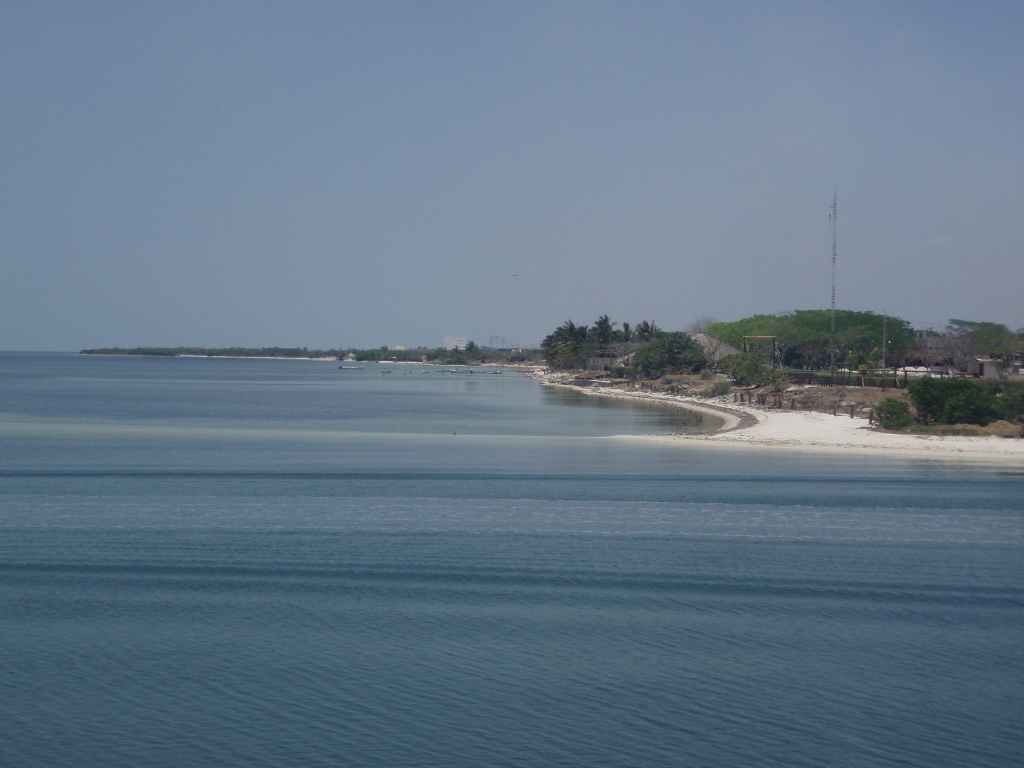 View of the Gulf of Mexico before moving inland
View of the Gulf of Mexico before moving inland
The trip from Campeche to Palenque took over five hours, but the coach was very comfortable and therefore I did not mind the length of the travel time in the least.
When I got to Palenque, at the coach terminal I wanted to buy immediately a ticket for the continuation of my journey and that meant a ticket to the Mexican border with Guatemala. However, such a direct coach ran only once a day, at 8 am. Since it was already too late that day for me to visit what I wanted in Palenque, continuing my journey first thing in the morning was out. On the other hand, I did not feel like staying in Palenque for two nights and move on in two days, so I realised I would have to come up with another plan.
The other problem was that there was no tourist information office at the coach terminal, but I still managed to ask around and people pointed to me which direction the centre of the town was. Namely, I had no booked accommodation here or any idea about where I could spend the night, so I just put on my big backpack, the small backpack in front of me and loaded like that I headed for the centre looking for a place to stay. This meant walking for some 15 minutes along a mild elevation and in the temperature of around 35 degrees. Surprisingly enough, I did not feel too bad and I even ended up finding a tourist office where I got some information.
So, on the one hand I had no booking, but I had a limited daily budget. For this reason I had to stop at a couple of guest-houses before coming across one that matched my financial possibilities. At moments, everything seemed depressing, but it all ended well.
The good side of this guest-house was that it was very close to the main square called the Central Park (Parque Central). There I came across some celebration organised by a secondary school.
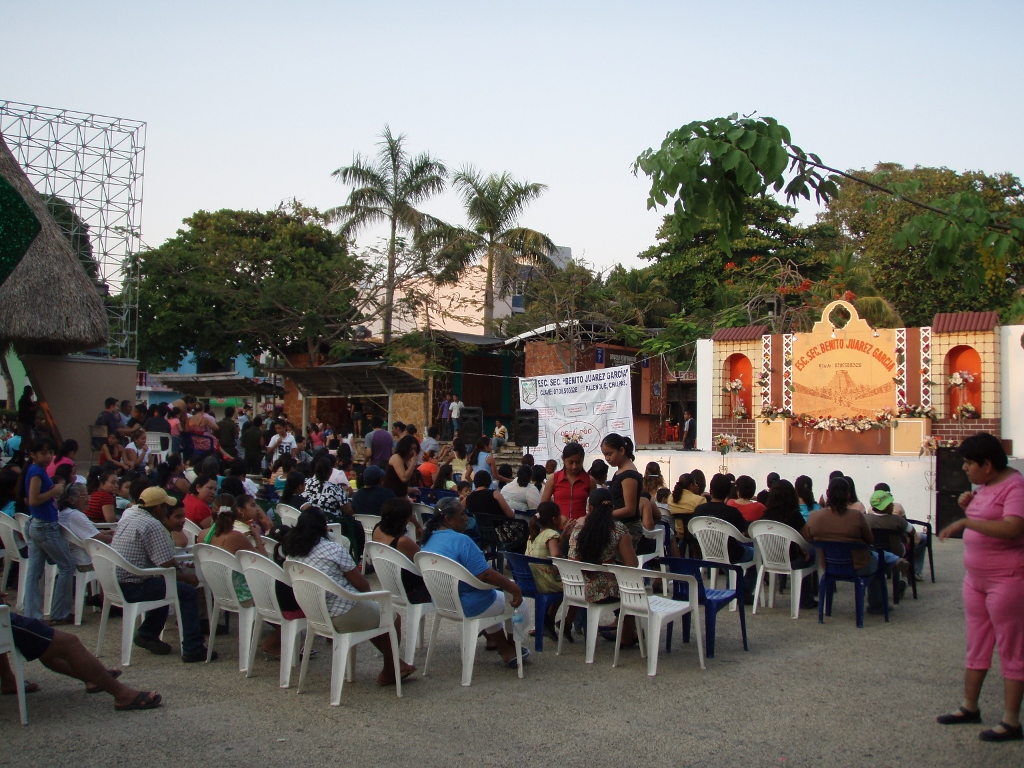 Central Park in Palenque
Central Park in Palenque
Some of the students also had stands where they were selling pealed fruit arranged in glasses and the offer also included a possibility to put some salt or ground chilli peppers over the fruit. Hey, I was in Mexico!
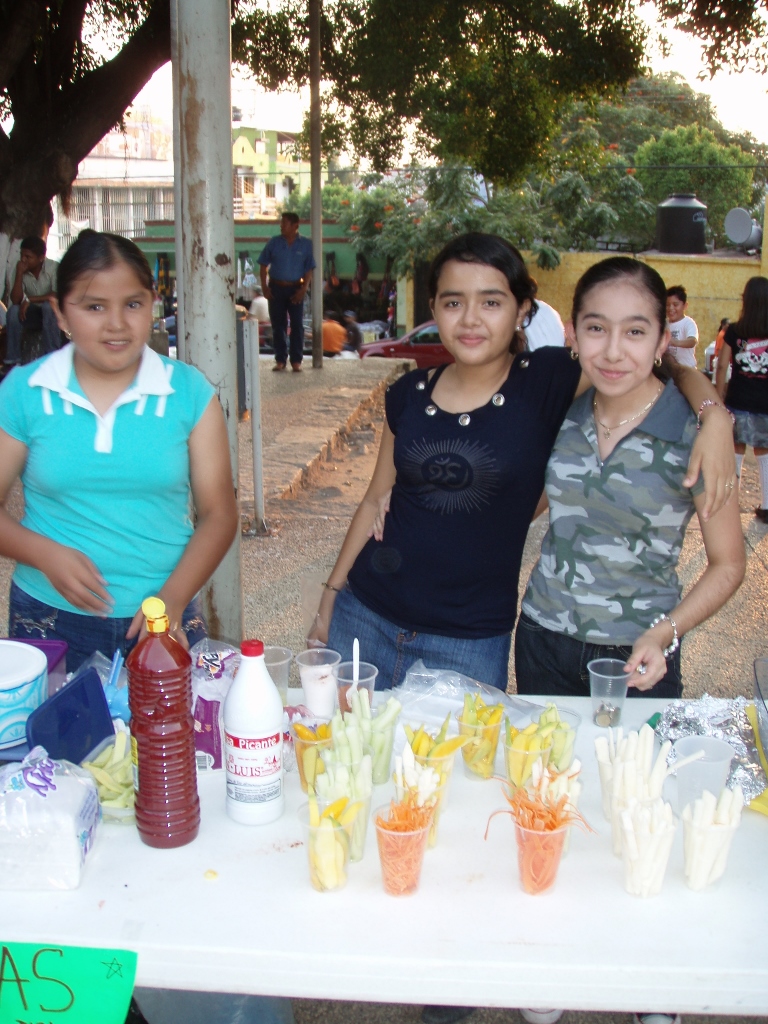 Fruit without spices is not “Mexican” enough
Fruit without spices is not “Mexican” enough
The city was founded in the 16th century and this is when it got its Spanish name and only a few centuries later remains of an ancient Mayan city-state were found near the city. The remains were named after the city and nowadays the archaeological site of Palenque is one of the most important sites belonging to the ancient Maya civilisation, which was the main reason why I came here.
By the way, the majority of the inhabitants of the city of Palenque and the municipality of the same name are ethnic descendents of the ancient Mayas.
I was not overwhelmed by Palenque as a contemporary city and that made me even more determined to move on the very next day, right after completing my visit to the archaeological site. For the time being, I sat at a restaurant in order to eat something and there I came up with the following plan. I would cut the travel to the Mexican border into segments and that would make the journey longer than a direct transfer, but I was certain this would be a better version. I would spend the following night in the city of San Cristobal de las Casas from where I could leave for the border early in the morning. With some luck, I could reach the destination of my choice in Guatemala that same day. Once I came up with this plan, I bought a ticket to San Cristobal and in the end I felt quite well.
However, I slept very poorly that night and as far as I can remember that was the worst night of the entire journey. It was very hot, the ceiling fan could not cool the air in the room enough, plus on top of its rotations it kept swaying and I wondered what would happen it if got unhooked... In other words, I could not calm my brain down! I kept waking up and then had trouble falling asleep again. Eventually, I gave up trying at 6.30 am and got up, so I was at the entrance into the site already at 7.15 am (the site is around 10 km away from the city centre). Since the site opens at 8 am, I had to wait for a while. The great thing was that I left my small backpack back in the room and I didn’t even take any water with me, but rather I came here to do the sightseeing without any physical load.
In order to kill the time, I started to walk along the road that I came here by. There is a lot of dense vegetation there and from the passenger van I drove here by I could see that there were some fine views, since the site is situated among hillocks and then from the mild elevation and between the vegetation one can see nicely the flatter sections in the surroundings.
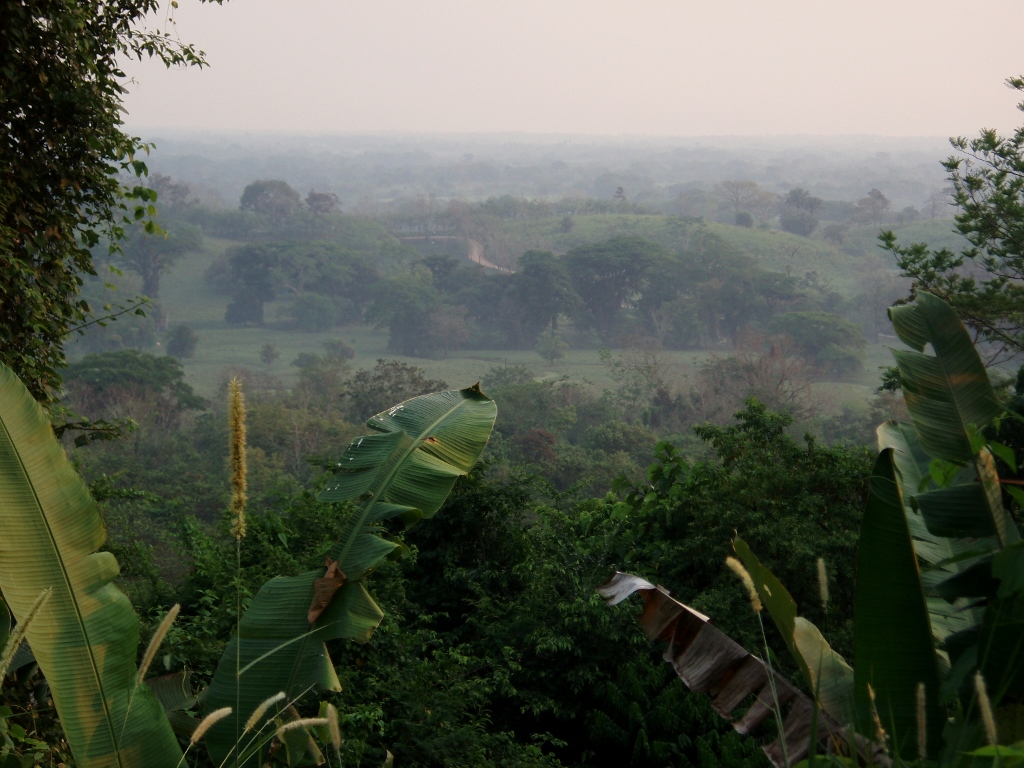 Surroundings of the archaeological site of Palenque
Surroundings of the archaeological site of Palenque
Although there was a lot of humidity in the air and it I could feel it quite distinctly, it was still early in the morning and the temperature was low enough that it was still bearable. And this felt good after the feeling of the lack of air the night before.
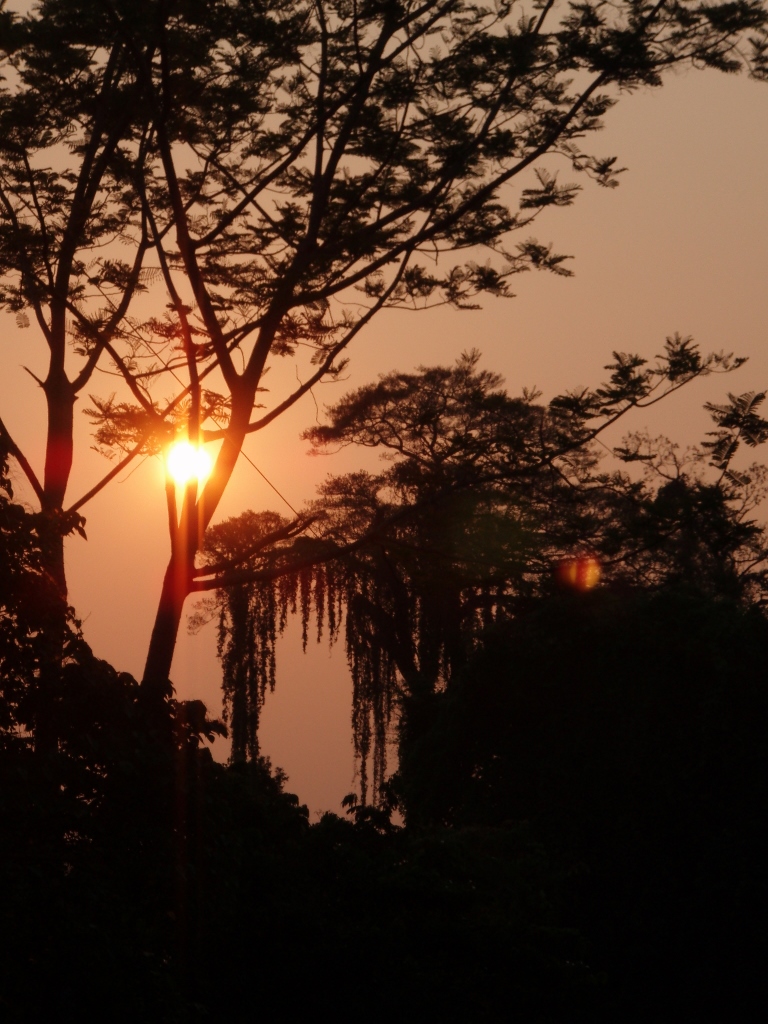 Sun penetrating through the mist created by the high air humidity
Sun penetrating through the mist created by the high air humidity
And then it was 8 am and the site was opened. Although all of the sites of the ancient Mayas I visited during this journey are exceptionally impressive, somehow Palenque has left a special mark within my memories. This is not a big site at all and it is certainly very interesting, but what makes it specific is that it was the first site I visited that was located in a rain forest. As one of the guidebooks puts it: “Palenque is everything that an archaeological site should be: mysterious, solemn, well-preserved and imposing.”
Already at the very entrance, a visitor comes across the first structure and according to the information I had in 2008 this temple was called the Temple of the Dying Moon and apart from this there was nothing else I knew about it. Today, I can see that another name is used for the temple – the Temple of the Skull (Templo de la Calavera) on account of a stucco relief on one of the pillars that shows a skull.
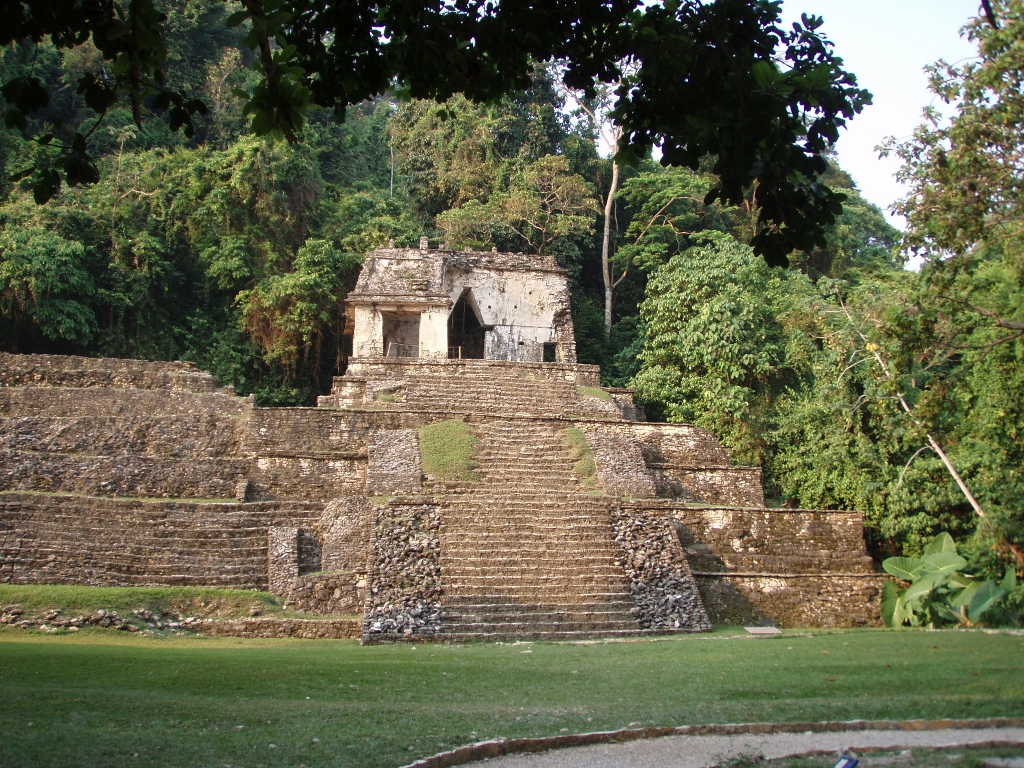 Temple of the Skull
Temple of the Skull
This temple and the next one, Temple XIII (Templo XIII) (some structures simply have numerical markings), were built in the 8th century on the top of the same platform and in their continuation there is also the Temple of the Inscriptions.
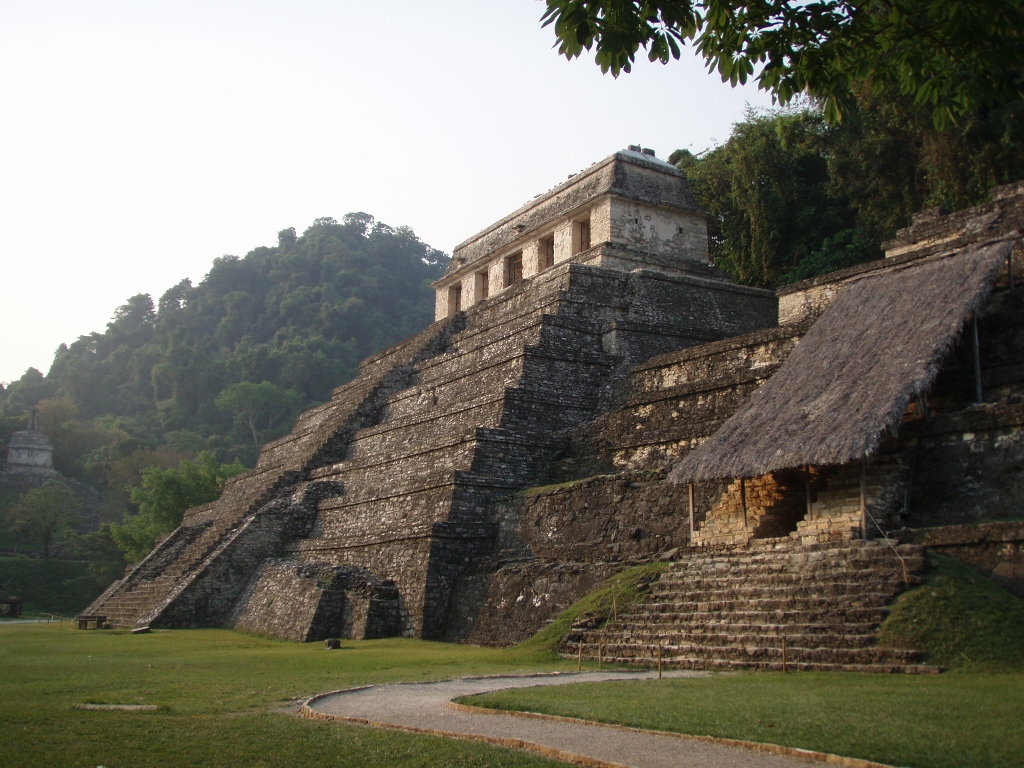 Temple of the Inscriptions (left) and the staircase of Temple XIII (right)
Temple of the Inscriptions (left) and the staircase of Temple XIII (right)
In 1994, the Tomb of the Red Queen (Tumba de la Reina Roja) was found in Temple XIII. The tomb included a stone sarcophagus in which remains of a woman from a noble class were found. Her exact identity is not known, but the tomb got its name because of the large quantity of bright red cinnabar powder. Next to the skeleton there were also numerous ornaments made of jade and pearls, and there was also a death mask made of malachite that is kept at the National Museum of Anthropology in Mexico City, one of the best museums in the world.
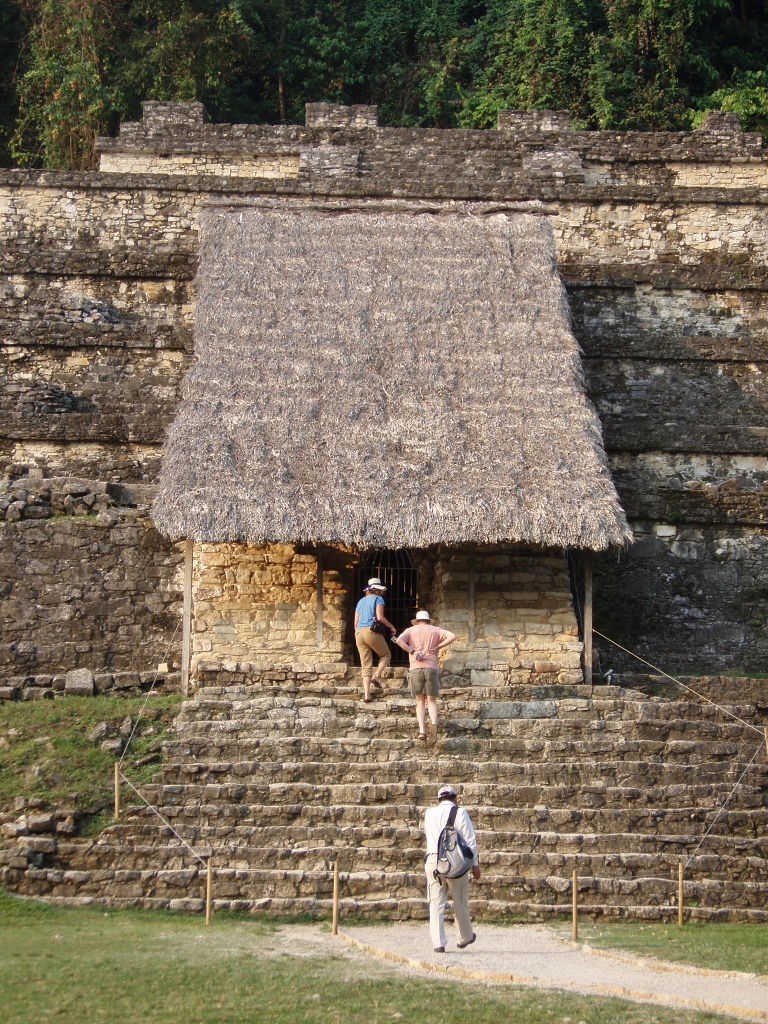 Parts of Temple XIII
Parts of Temple XIII
As I’ve said, in the continuation of these two structures the one comes across first, there is the Temple of the Inscriptions (Templo de las Inscripciones), one of the most important structures in Palenque.
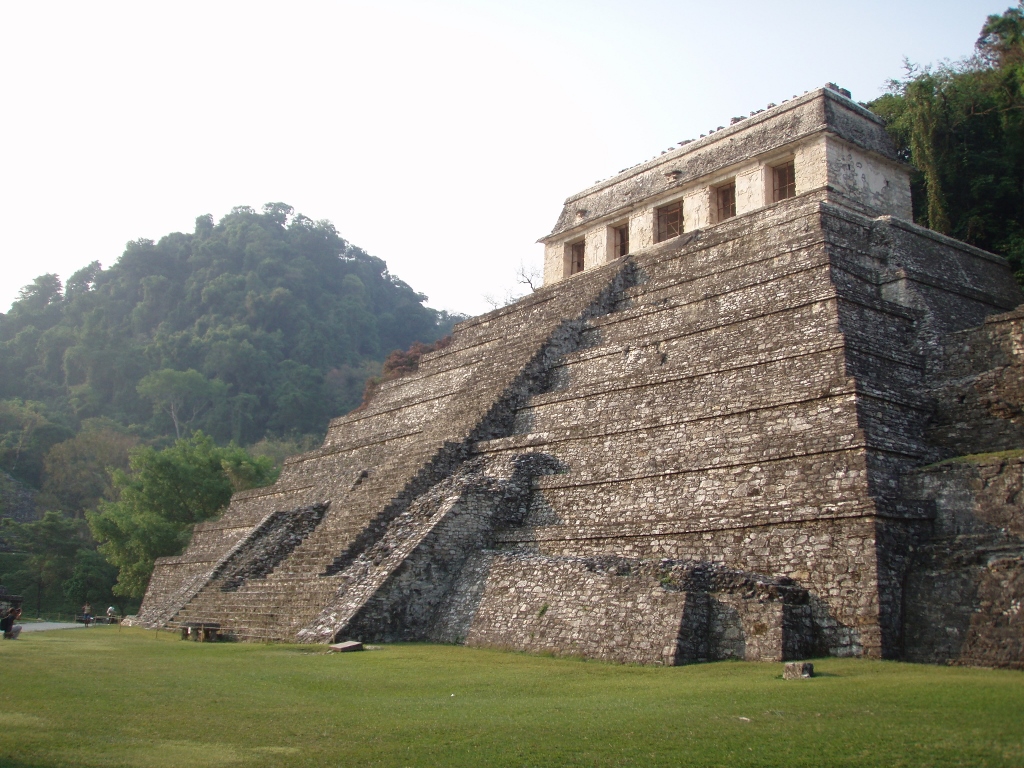 Temple of the Inscriptions
Temple of the Inscriptions
In order to have a better view at this temple, I decided to climb the stairs of the other of the most important structures and that was the Palace (El Palacio).
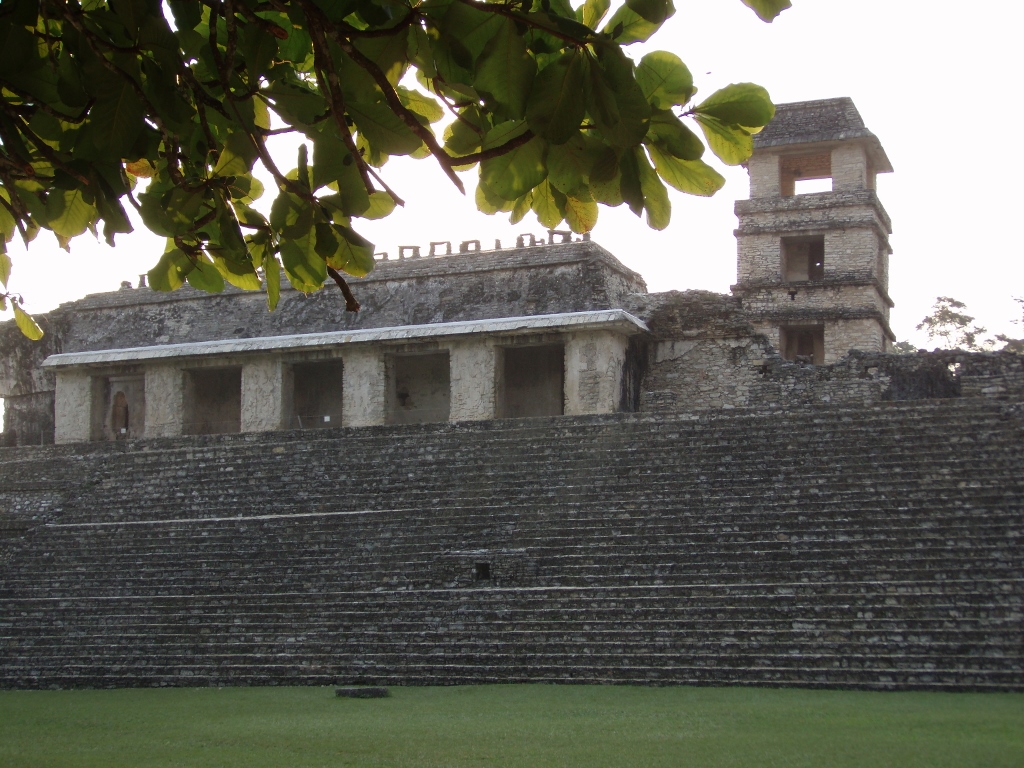 The Palace in Palenque
The Palace in Palenque
I did not regret it. The view at the Temple of the Inscriptions, Temple XIII and the Temple of the Skull was fantastic.
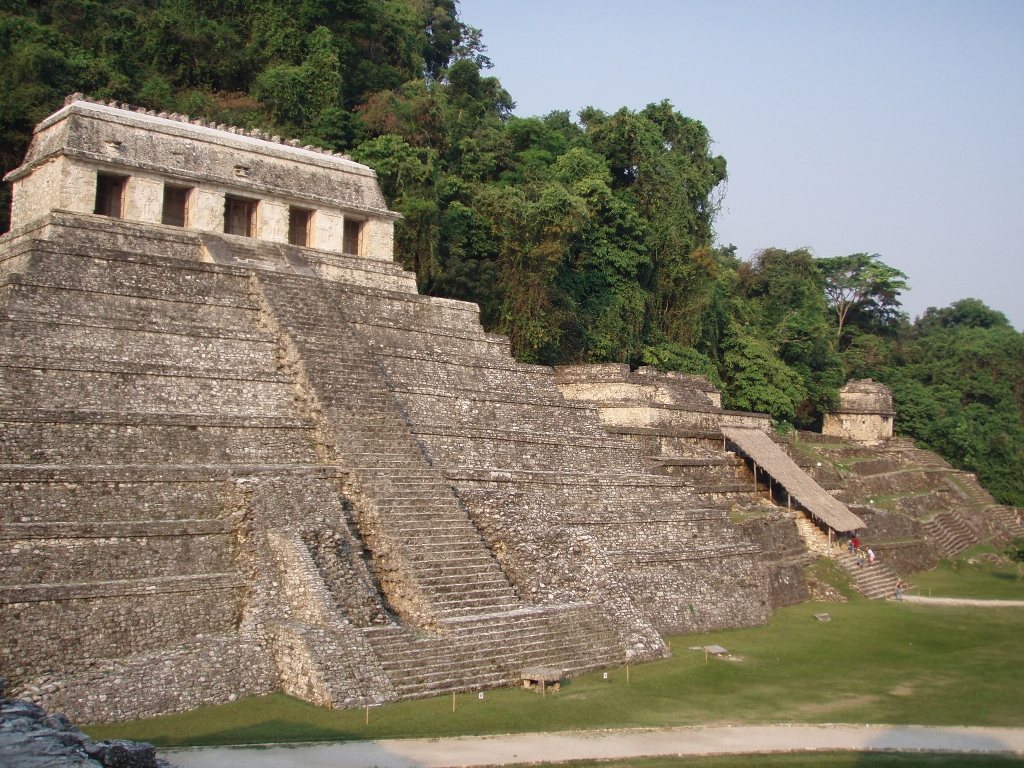 In a sequence: the Temple of the Inscriptions, Temple XIII and the Temple of the Skull
In a sequence: the Temple of the Inscriptions, Temple XIII and the Temple of the Skull